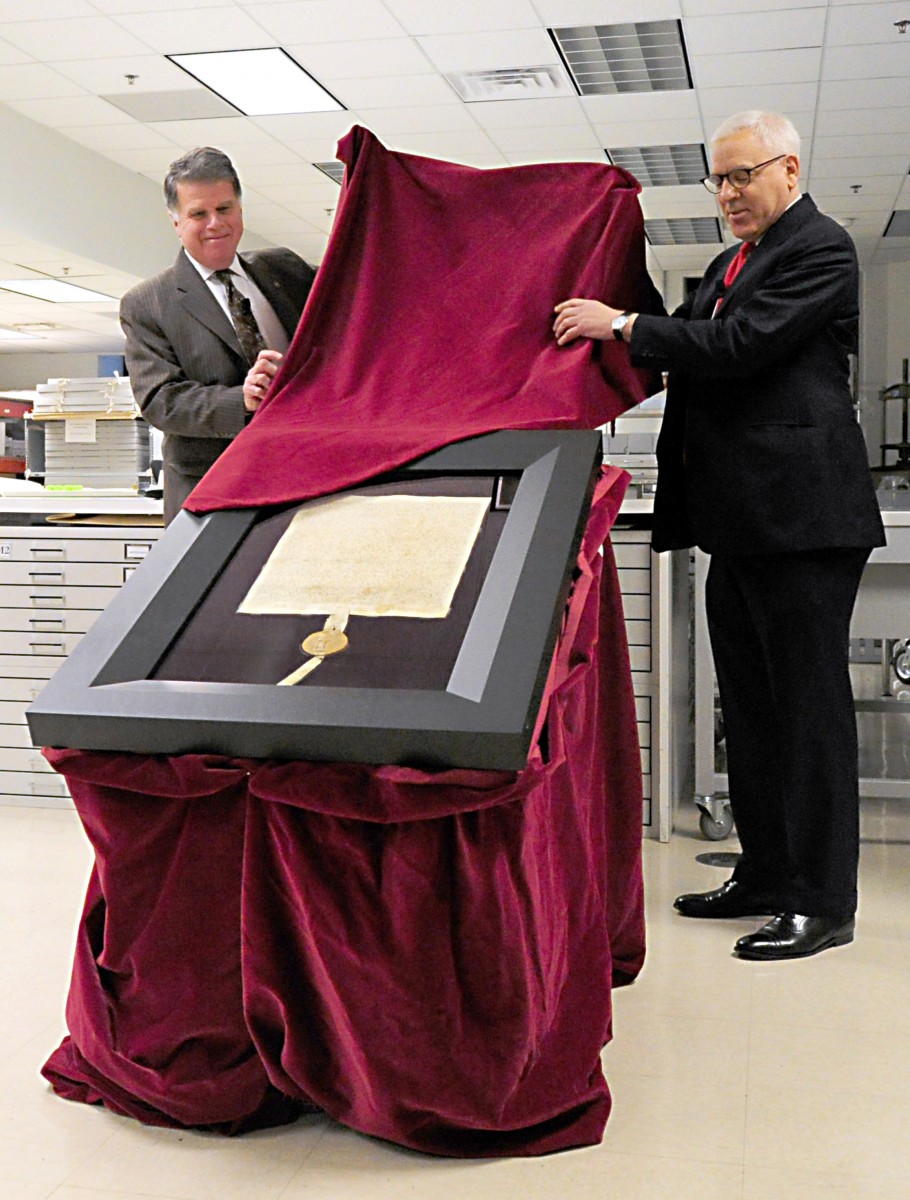The National Archives this month will feature an artifact considered by many to be the most significant document in Western history—the Magna Carta.
Although it predates American history by several centuries, the Magna Carta will soon enjoy a prestigious place in the U.S. National Archives and Records Administration (NARA). Originating from 1297, the document has recently undergone a complete restoration, and will be displayed in a state-of-the-art encasement designed to preserve the artifact for many years to come.
There are only 17 existing copies of the Magna Carta worldwide. While nearly all are found in British institutions, one remains in private hands. Previously owned by former presidential candidate and Texas tycoon Ross Perot, the document was sold in 2007 to David Rubenstein, co-founder of the private equity firm the Carlyle Group, for $21.3 million.
In a video for NARA, Rubenstein explains that when he heard the remaining copy was going up for sale, and likely to be purchased by someone outside the United States, he decided to buy it and provide it as a gift to the National Archives so the American public could see it.
Rubenstein, in addition to being one of the nation’s wealthiest individuals, is also a renowned philanthropist, and many of his gifts involve the preservation and public access of historical treasures. This year Rubenstein donated over $7 million to the repair of the Washington Monument, and he has previously loaned out copies of the Declaration of Independence, Emancipation Proclamation, and his other historic documents to various government institutions.
While the Magna Carta was on exhibition at NARA throughout the Perot years, the document disappeared from public view to undergo an extensive 10-month conservation treatment. The restored artifact will be back on display Feb. 17, and NARA says that viewers will even be able to examine the Latin text through a translation feature.
NARA used techniques learned in the 2003 restoration of the Declaration of Independence to make the Magna Carta as clear and readable as possible, and conservators made sure the work would last. NARA suggests that the document is one of only about two dozen around the world protected with airtight encasing.
While the preservation effort is certainly remarkable, many wonder what a document for 13th century feudal lords has to do with life in America.
“What it really does is provide the basic rights we have as citizens in the Western world—the right to trial by jury, punishment that is in proportion to the crime, no taxation without representation, habeas corpus, and so forth,” said Rubenstein in the NARA video.
In essence the Magna Carta, or the Great Charter, serves to keep absolute power in check. Drawn up by medieval English land barons frustrated with King John’s regressive mandates, the Great Charter presented the king with a list of traditional English liberties that were to be granted to freemen throughout the kingdom. Since the cornered king relied heavily upon the lords of the land for military support, he signed the document to ensure their loyalty.
As colonialism spread, so did the desire to preserve rights. According to NARA, when Englishmen left to establish colonies in the New World, they brought with them charters guaranteeing the same liberties and immunities free and natural subjects enjoyed in their homeland.
Historians say that when American colonists raised arms against England, they weren’t fighting for new freedoms, but instead preserving liberties that dated back to the 13th century.
The Magna Carta played a guiding role for America’s founding fathers as they worked to draft language to protect their “unalienable rights” from any arbitrary laws of England’s king.
Historians say the Magna Carta’s influence can be seen in the U.S. Constitution and Declaration of Independence, but the document’s heritage is most clearly apparent in the U.S. Bill of Rights. Like the restraints the Magna Carta put on King John, the Bill of Rights serves to limit the power and control of the federal government, protecting the rights of the people from overbearing leaders and laws.
While the Magna Carta will be available for public view later this month, work has already begun on the next phase—a new gallery dedicated to a permanent, interactive exhibit with the Magna Carta as the opening feature. Rubenstein gave national record keepers $13.5 million to construct the space.
Slated for completion in 2013, NARA says this new gallery will celebrate the Records of Rights and highlight efforts to advance liberty and democracy throughout U.S. history.
Magna Carta Restored
The National Archives this month will feature an artifact considered by many to be the most significant document in Western history—the Magna Carta.
Save

Philanthropist David Rubenstein(R) and archivist of the U.S. David Ferriero unveil the Magna Carta Feb. 2 during a press preview of the newly encased document at the National Archives in Washington, D.C. The National Archives is preparing to unveil its 715-year-old copy of the Magna Carta. KAREN BLEIER/AFP/Getty Images

By Conan Milner
Updated:





